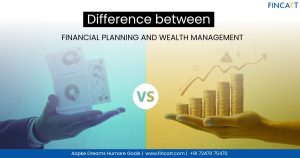Every investor sets out with specific wealth goals—whether it’s securing a child’s education, arranging funds for a home purchase, or building a financial cushion for unforeseen needs. The challenge, however, lies in matching these goals with realistic timelines.
A common belief is that a three-year horizon is sufficient to generate substantial wealth through equity mutual funds or other so-called “high-return” options. But is that truly a strategy—or just optimism in disguise? While short-term aspirations are natural, bridging them with practical outcomes is where most investors struggle.
In this blog, we’ll explore the pitfalls of unrealistic return expectations, what history reveals about equity performance over three years, and how to create a mature investment plan that balances ambition with reality.
The Wishful Thinking Trap
One of the biggest dilemmas investors face is confusing hope with strategy. Many expect:
- High returns with low risk
- Capital safety with liquidity
- Quick growth without volatility
It sounds perfect, but in reality, it’s like wanting a luxury vacation without spending money. Markets don’t reward this kind of wishful thinking. Equity mutual funds, especially mid- and small-cap categories, have historically shown the potential to generate more than 20% returns in a few instances. But the same categories have also produced disappointing, and sometimes negative, outcomes in the same timeframe.
This is where most investors get caught—they focus only on the best-case numbers without understanding the range of outcomes.
What the Numbers Say: Category-Wise Reality Check
When you look at how equity funds have performed over different three-year periods in the past decade, the picture is mixed—sometimes rewarding, sometimes disappointing.
- Large-cap funds: These are the most stable among equity options. Over three years, they generally stay in the 10–15% range and only occasionally cross 18%. Good for steadiness, but unlikely to double your money quickly.
- Mid-cap funds: They have delivered 20%+ returns in nearly half the cases, which looks attractive. But the same funds have also turned negative in bad cycles. So, depending on when you enter, you could either see great growth or unexpected losses.
- Small-cap funds: These offer the highest growth potential and often top 20% returns. But they also come with sharp corrections—sometimes leaving investors with less than their original capital if the timing is unlucky.
- Flexi-cap funds: By mixing large, mid, and small caps, these provide some balance. They smoothen volatility, but even here, 20%+ over three years is not consistent.
Equities can be exciting when they work in your favor, but over a short horizon like three years, they can just as easily backfire. If your wealth goals are short-term, betting entirely on equities is like flipping a coin—you could win big, but you could also walk away with less.
The Risk of Relying on Best-Case Scenarios
It’s easy to get carried away by the best numbers we see in brochures or advertisements. But building your entire plan on those outcomes can be dangerous.
Take an example: if you invest ₹10 lakh and dream of it becoming ₹17–18 lakh in three years, you may ignore the fact that, in a bad cycle, the same investment could shrink to around ₹7 lakh. That’s a big gap between expectation and reality.
The reason is simple—equity markets are volatile in the short run. A three-year horizon is too short for the market to recover if it hits a downturn, which means your money could be stuck at the wrong time.
On top of that, human behavior adds to the problem. When returns disappoint, investors often panic, redeem at the lowest point, and end up locking in losses that could have been avoided with patience.
So, while chasing eye-catching returns may sound tempting, ignoring the downside risk can derail your wealth goals. It’s just like running a household budget—you can’t plan only for income while pretending expenses don’t exist.
A Grown-Up Investment Plan
If your wealth goals are strictly three years away, equities shouldn’t form the core of your portfolio. Here’s what a mature investment plan looks like:
1. Short-Duration Debt Funds
These funds invest in bonds with shorter maturities and have shown near-zero chances of negative returns over three-year periods. Historically, they have delivered a consistent 5–7% annual return. Not flashy, but highly dependable.
2. Target-Maturity Funds
These are predictable, debt-oriented instruments aligned with specific maturity dates. They offer better visibility of returns and are less sensitive to short-term market swings.
3. Hybrid Approach
If you still want equity exposure, cap it at 20–30% of your portfolio and place it in large-cap funds. This adds growth potential without overwhelming your risk profile.
4. Emergency Buffer
Keep a portion in ultra-short duration funds or high-quality fixed deposits. Liquidity and safety matter when your timeline is limited.
By blending these options, you create a portfolio that balances capital protection with reasonable growth. It may not hit the 20% jackpot, but it will ensure your three-year wealth goals don’t turn into a nightmare.
Equity Isn’t the Villain, But It Needs Time
Sometimes, when we talk about the risks of equities in the short term, investors feel the message is “anti-equity.” That’s not true at all. In fact, equity is one of the most powerful long-term wealth creators. It consistently beats inflation, builds real purchasing power, and helps achieve life’s bigger milestones—like retirement, children’s education, or buying property.
The challenge lies in the time factor. Equity is not designed for short sprints; it’s built for marathons. Short-term movements are unpredictable and can swing sharply, but given enough years, the ups and downs even out, allowing the true compounding effect to work.
Here’s how timeframes matter:
- Large-cap funds: These are relatively stable, but they still need at least 5 years to show their strength. Anything shorter, and the returns can look disappointing.
- Mid-cap funds: With higher growth potential comes higher volatility. To balance out the swings, you should ideally hold them for 7–10 years.
- Small-cap funds: These can multiply wealth but also experience the steepest falls. They require 10 years or more for the risks to average out and for growth to truly shine.
So, if your wealth goals are short-term—say within three years—it’s wiser to prioritize stability through debt funds or other safer avenues. On the other hand, if your goals are long-term, equities deserve a prominent place in your portfolio.
The mistake many investors make is mixing the two—using equity for short-term needs or expecting steady, “safe” returns from it. That mismatch between goals and timelines is often the real cause of disappointment, not the asset class itself.
Conclusion: Invest Like an Adult, Not a Dreamer
Setting wealth goals is the first step toward financial maturity. But chasing unrealistic returns in three years is less about planning and more about hoping. And hope isn’t a strategy.
A grown-up investor recognizes that:
- Three years is too short for aggressive equity bets.
- Reliable wealth-building needs aligning products with timelines.
- Risk isn’t eliminated; it is managed.
The smarter path is to respect timeframes. Use debt funds or hybrid structures for short-term goals. Reserve equities for the long haul.
At the end of the day, financial maturity isn’t about chasing miracles—it’s about building wealth steadily, with a plan that works across scenarios, not just in best-case outcomes.
So the next time you think about your three-year wealth goals, ask yourself: are you planning—or just hoping?
At Fincart, we help investors align their wealth goals with the right strategies—balancing ambition with practicality. Because building wealth is not about shortcuts, it’s about smart choices.




